David Dines, MD & Joshua Dines, MD provide a broad range of Orthopedic Sports Medicine services. Both are attending surgeons at Hospital for Special Surgery (HSS) in New York City.
David Dines, MD, is an experienced orthopedic doctor who has built his practice based on decades of clinical experience and research focusing on the shoulder and related injuries. He is the Medical Director for the ATP World Tennis Tour and has operated on thousands of shoulders throughout his career while publishing many of the most important research articles and textbooks on shoulder surgery.
Joshua Dines, MD provides a full range of Sports Medicine services, including surgical and non-surgical treatments for injuries to the shoulder, knee, and elbow. He works with the NY Mets and NY Rangers as well as college athletes, high-school athletes, weekend warriors, and those patients just looking to get back to performing their everyday activities without pain. Together, Dines Orthopedics offers offices in two convenient locations in New York City at Hospital for Special Surgery and in Uniondale Long Island, offering their patients surgical and non-surgical options in both locations.

Contact Our Team
Knee Arthroscopy in NYC
Knee arthroscopy is a procedure that allows surgeons to see the knee joining without making a large incision through your skin and other soft tissues. This procedure is minimally invasive and can even prevent the need for full open surgery. Our NYC top arthroscopic knee surgeon at Dines Orthopedics uses arthroscopy to diagnose and treat many problems in patients. Arthroscopy is usually successful in helping reduce or eliminate pain associated with cartilage damage or soft tissue damage.
NYC’s top arthroscopic knee surgeons and patients prefer knee scoping compared to other procedures since it is only a tiny incision and not open surgery. Before scheduling an arthroscopy with NYC’s top arthroscopic knee surgeon, your doctor will most likely have you attempt the RICE method. RICE stands for Rest, Ice, Compression, and Elevation, and then go from there depending on if that made a difference in your injury.
Use of knee arthroscopy:
- Diagnose injuries
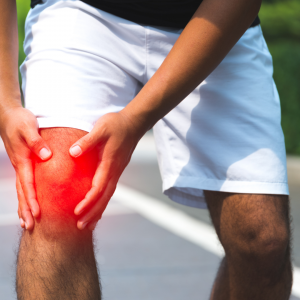
- Repair injured bones and soft tissues
- Removed damaged or inflamed tissues
Some common arthroscopy procedures:
- Partial meniscectomy
- Torn meniscus repair
- Meniscus transplant
- Fractures
- Inflammation
- Swollen synovium
- Torn cartilage that is loose in the joint
- Removal of a Baker’s cyst
- Torn anterior or posterior crucial ligaments
In some cases, nonsurgical treatment will work, including rest, physical therapy, medications, or injections to help reduce inflammation. Our sports medicine doctor at Dines is here to help you with recovering from injuries.
What Arthroscopies Are Used For?
There are two main reasons why a patient would have an arthroscopy. The first reason is to repair or remove any damaged structures, such as removing torn or loose pieces of cartilage or repairing a torn meniscus. The second reason is to confirm and diagnose what is actually wrong and see the quality of your knee joint.
During the arthroscopy procedure, your procedure will insert a small camera into the incision to get a full view of your knee to see what the problem is. The camera displays the images in the operating room. Your NYC top arthroscopic knee surgeon then uses the images on the screen to guide him in using his surgical instruments during the procedure. The incision area is also very small since arthroscopic surgery uses such small surgical instruments.
Arthroscopic Knee Surgery Recovery
The small size of the incisions causes patients less pain and joint stiffness and often shortens the time to recover and resume normal activity. This procedure typically takes less than one hour but depending on what our Manhattan orthopaedic surgeons find, and it may take longer depending on the treatment. Although the likelihood of complications is low for this procedure, there is still a chance, and if they do occur and they are minor complications that can be treated with ease.
Complications that could occur:
- Infection
- Blood cloths
- Knee stiffness
- Accumulation of blood in the knee
- Bruising
- Swelling
- Injury to your cartilage, ligaments, meniscus, blood vessels, or nerves around your knee
- Excess bleeding during the procedure
- Allergic reaction to anesthesia or other medications
Surgeon in NYC
Once your NYC top arthroscopic knee surgeon finishes the procedure, your incisions will be closed with either stitches or steri-strips, and your knee will be wrapped with a soft bandage. Some cases require braces. Any major repair or reconstruction occurred during the procedure. After the knee arthroscopy procedure, you will be moved into a recovery room and will be able to go home within 1 or 2 hours. This type of surgery is a faster recovery than open knee surgery.
NYC Top Arthroscopic Knee Surgeon
If you need minimally invasive knee orthopaedic surgery Dines can help you. We specialize in the treatment of knee conditions. We will prescribe you medication for pain relief and may recommend medications to decrease your chance of getting blood clots. You will need to keep your leg elevated as much as possible to help lessen the swelling and pain in your knee. Your NYC top arthroscopic knee surgeon will keep you updated on if you can put weight on your knee after the procedure. Most patients need crutches after this surgery.
It is also crucial that you keep your incision area dry and clean. After the procedure, you will need to exercise your knee regularly for several weeks post-operation. By exercising your knee,, you will restore motion and strengthen your knee and leg muscles. Your NYC top arthroscopic knee surgeon could recommend you to see a physical therapist until you are able to use your knee normally again. With proper physical therapy exercises, you will be about to recover fully and quickly!
Avoiding Knee Injuries
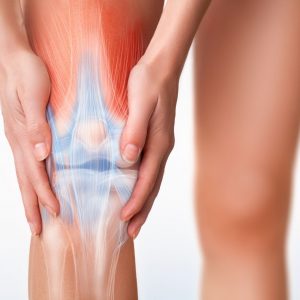 The knee is the most common part of the body that is prone to injuries. No matter your activity level, knee injuries can very easily disrupt daily life, limiting your ability to go to work or maintain an active lifestyle. These injuries are prevalent if you are an athlete. Determining the underlying cause of the pain by overuse of the knee, a sudden injury, or an underlying condition of the knee, such as arthritis. If you are experiencing pain, swelling, or stiffness in your joint, it is crucial to develop an appropriate treatment course. This is why it is important to consult with a professional to receive a proper diagnosis and subsequent proper treatment and therapy. At Dines Orthopedics, Our NYC Top Arthroscopic Knee Surgeon can offer you the trusted knowledge and expertise to get you back in good health and help you feel better.
The knee is the most common part of the body that is prone to injuries. No matter your activity level, knee injuries can very easily disrupt daily life, limiting your ability to go to work or maintain an active lifestyle. These injuries are prevalent if you are an athlete. Determining the underlying cause of the pain by overuse of the knee, a sudden injury, or an underlying condition of the knee, such as arthritis. If you are experiencing pain, swelling, or stiffness in your joint, it is crucial to develop an appropriate treatment course. This is why it is important to consult with a professional to receive a proper diagnosis and subsequent proper treatment and therapy. At Dines Orthopedics, Our NYC Top Arthroscopic Knee Surgeon can offer you the trusted knowledge and expertise to get you back in good health and help you feel better.
What Causes Knee Pain?
The knee is a joint that is made up of various ligaments, muscles, tendons, and cartilage, all of which can be injured in some way and cause a lot of pain. Problems such as runner’s knee, tendonitis, dislocations, arthritis, sprained ligaments, excess use of the knee, and several other factors can cause knee pain, and a knee injury must be properly treated. If you are experiencing any knee pain or discomfort, NYC Top Arthroscopic Knee Surgeon can provide you with the right treatment you need to get your knee back to its full function.
How Can I Avoid a Knee Injury?
The knee is in charge of holding up our entire body together, and it can take a toll on us because of all of their responsibilities to keep us moving. It is important to know some tips that you can follow to help prevent knee pain and injuries.
Orthopedic Care For Knee Pain:
- Maintain Healthy Weight: Excess weight can put stress on the joints in your knee, which can lead to severe knee injuries, chronic knee pain, or even conditions such as osteoarthritis.
- Be Active: Any type of physical activity can help prevent knee discomfort or pain.
- Rest and Compress Your Knee: Being active is important, but it is also essential to make sure you also take a break from any intense activity. Using protection such as knee guards during activities can help avoid any injuries.
- Elevate Your Knee: Posture is important, and slouching and bending a certain way can lead to an injury or chronic pain due to pressure on your knees. Simply elevating your knee when sitting or lying down can help minimize swelling and pressure in your knees.
- Pay Attention to any Pain/Discomfort: Don’t ignore any pain or discomfort you may feel in your knees. Any injury left untreated can flare up and hurt you.
- Stretching Exercises: Before doing any physical activity, stretching exercises can help loosen the muscles and help minimize pressure on the knees. Whether it’s for athletic training or simply just for recreation, stretching is highly recommended.
For more information on what could be causing your knee pain and tips, you can follow to help manage your knee pain, click here. Don’t battle your knee pain alone. If you are dealing with any knee injuries, book an appointment with Dines Orthopedics today to start your healing process.
Dines Orthopedic Surgeon
Being active is one of the best things you can do for your body. With being active, comes injuries that usually involve the knees. An injury to the knee can be very disruptive to the activities of daily living. Whether it be related to work or leisurely recreational activities that you enjoy, and if you are an athlete, it can prevent you from participating again. It’s crucial to address the issues giving you pain so that they can be appropriately diagnosed, treated, and managed early on. The earlier that a diagnosis and treatment plan is set in place, the more likely effective steps can be taken to alleviate your discomfort, get you back to your healthy self, and move you again. If you are in need of an NYC Top Arthroscopic Knee Surgeon, contact Dines Orthopedics today to receive knee treatment. Find out how arthroscopy can prevent full orthopedic surgery.
Frequently Ask Questions
Orthopedists are a branch of the medical field that focuses on treating a person’s musculoskeletal system whenever they receive an injury or are looking to prevent an injury from returning. The musculoskeletal system consists of your bones, muscles, ligaments, joints, and tendons.
While all three are in the orthopedic family and deal with treating injuries in the musculoskeletal system, they each have their role in the recovery process. An orthopedic physician is the one who diagnoses a patient’s injury and recommends the best form of treatment for a patient’s injury. One of these forms of treatment is surgery, where the orthopedic surgeon specializes in performing surgery on your musculoskeletal system. Finally is the orthopedic physical therapist, which can be seen as a treatment from the orthopedic physician or the orthopedic surgeon. Here at Dines Orthopedics, our orthopedist on the UES specializes in orthopedic physical therapy and offers surgery should the need arise.
Orthopedists specialize in many different areas. Some might focus on a large area, while other practices will only specialize in a certain subset. At Dines Orthopedics, we focus on treating a patient’s shoulder, elbows, and knees. Whereas the orthopedist field as a whole covers the following areas:
- Ankles
- Back
- Elbows
- Feet
- Hands
- Hips
- Knees
- Neck
- Shoulders
- Wrists
When it comes to visiting an orthopedist, patients have a variety of different injuries or other medical conditions. The following list is only a small portion of what orthopedists treat if you’re feeling pain in any of your muscles, bones, joints, or tendons, and you don’t think any of the following is what you are experiencing. We recommend you visit an orthopedist to help diagnose. Some injuries that orthopedists treat are:
- Arthritis
- Neck or back pain
- Work injuries or accidents
- Sports injuries or accidents
- Post-orthopedic surgery recoveries
- Knee conditions
- Foot and ankle conditions
- Shoulder conditions
- Hip conditions
- Prosthetic training
When it comes to treatment, each orthopedic practice is different, as well as the injury and how the orthopedist treats it. While many different factors make each patient’s treatment different from another. Generally speaking, most treatment revolves around physical therapy and exercises to heal the body. At Dines Orthopedists, our expert team of orthopedist on the UES focus on treating patients by providing them with the care they need. Some treatments include:
- Strength training
- Balance training
- Massages
- Range of motion exercises
- Muscle stimulation
- Application of heat pads and ice packs
- And more
While it is common to think that once physical therapy is complete, you are completely healed, this is, in fact, not the case. Depending on your injury, you might have to do frequent check-ups with your orthopedic physician to ensure that nothing new has come up or to monitor your condition and ensure that you are healing well with no long-term conditions. As well as frequent monitoring, physical therapists could assign you with at-home exercises to perform to make sure that your body continues to heal once your sessions are over. They will also assign these exercises in order to help prevent future injuries from occurring in these areas.
Treating Damaged Knee Cartilage
Have you been experiencing knee pain? Damaged cartilage is a possible reason why you may be feeling this. The knee is the largest joint in our body and is used for our everyday activities such as walking, standing, sitting, and running. The knee is also quite easy to get injured as well. Dealing with pain can prevent you from enjoying your hobbies or just completing functional tasks. At Dines Orthopedics, you will have our NYC Top Arthroscopic Knee Surgeon, to get treatment for your damaged knee. We understand that this is a stressful time, and our main goal is to get you healed. Please continue reading to learn more about damaged cartilage and treatment!
Cartilage Damage
The knee consists of bones, ligaments, cartilage, and tendons. Cartilage is a connective tissue that is all over the body. Cartilage acts as a cushion between the joints of bones. When cartilage is damaged, individuals will typically feel inflammation, swelling, or joint pain. Cartilage does not have a blood supply compared to other types of tissue in our body. The lack of blood supply makes the healing process for cartilage take a lot longer. A few causes of knee cartilage damage are wear and tear or trauma to the cartilage. An NYC Top Arthroscopic Knee Surgeon will review the symptoms you’ve been experiencing. Some symptoms you can have if you suffer from knee cartilage damage are:
- Knee stiffness
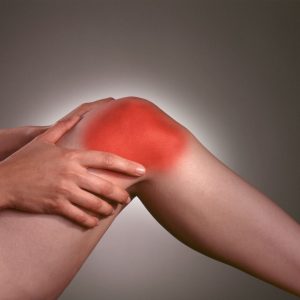
- Locking sensation when bending knees
- Difficulty bearing weight
- Popping noise when walking or going up and downstairs
- Knee Swelling
The types of knee cartilage damage are:
- Meniscus tears: Very common knee injury for individuals of all ages. The meniscus is one type of cartilage in the knee. Meniscus tears occur when there is a forceful twist in the knee. Some may need surgery depending on where the tear occurred on the meniscus (i.e., outer one-third). If this is left untreated, it can lead to arthritis.
- Articular tears: Articular cartilage is another type of cartilage in the knee, and this is damaged through trauma to the knee. If this is left untreated, this can lead to osteoarthritis.
Treatment of Damaged Cartilage
There are high risks of leaving your damaged knee cartilage untreated. It is important to seek medical attention if you feel like experiencing any of these previously mentioned symptoms. You will have an experienced knee doctor at our facility in Uniondale NY. The knee doctor will do a physical exam to test your tenderness to touch, joint pain, swelling, and much more. You will be able to discuss your symptoms and concerns with your physician to aid in your diagnosis.
An X-ray will be completed to rule out arthritis. Lastly, magnetic resonance imaging (MRI) will be performed to see any soft tissue damage such as meniscus and articular tears. After your diagnosis has been made, our NYC Top Arthroscopic Knee Surgeon will prepare a treatment plan. Everyone has different severity levels. Therefore, they will have different treatment options. Below are some examples of how to treat damaged knee cartilage:
- RICE Method: Rest, ice, compression, and elevation of the knee
- Anti-inflammatory drugs
- Arthroscopic meniscus repair: Connect the ripped meniscus
- Partial meniscectomy: Cutting out the damaged connective tissue and leaving only the healthy parts
- Total meniscectomy: Complete removal of the meniscal tissue
- Total knee replacement: Articular tears benefit from this procedure. This is done when the physician has seen profound bone degeneration.
Schedule An Appointment For Arthroscopic Surgery
If you’re struggling with your knee pain and need help, visit our office today. Knee cartilage damage is a very common issue for several age groups. Our knees play a major role in our everyday lives, so you must treat them immediately. If your cartilage damage is left untreated, it can lead to arthritis. The sooner you get treated, the better prognosis you’ll have. Contact us to schedule an appointment today! Please call our office or book an appointment online today!
